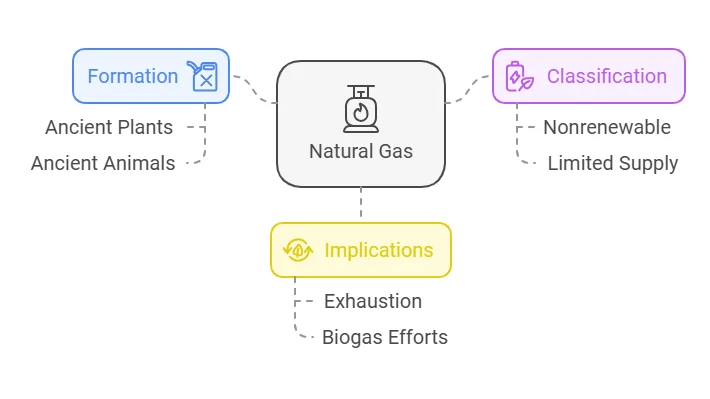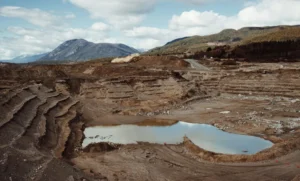No, Natural gas is not a renewable resource.
Natural gas is a crucial energy source worldwide, providing power for homes, industries, and vehicles. As the world seeks more sustainable energy options, it’s essential to understand how natural gas fits into the broader energy landscape.
This article examines whether is natural gas a renewable resource and its role in future energy policies.
What is Natural Gas

Natural gas is a fossil fuel. It lies deep inside the Earth, and its main component is methane. Natural gas is used as fuel, in heating, electricity generation, and in vehicles. Since it can be extracted by drilling, it has become a very important source of energy. The reasons behind this are the efficiency and availability of natural gas.
It would be essential to understand the origins of natural gas and whether it can be replenished like renewable resources.
Facts on Natural Gas
- Natural gas constitutes roughly 24% of the total energy consumption.
- The United States has the greatest proven reserves in natural gas that amount to around 494.9 trillion cubic feet.
- The primary constituent of natural gas, methane, is a potent greenhouse gas with a Global Warming Potential (GWP) of 28-34 times that of carbon dioxide over 100 years.
Is Natural Gas Renewable

Natural gas is classified as a nonrenewable resource. It forms over millions of years from the remains of ancient plants and animals, making it limited and not refilled within a human timescale.
Although there are efforts to produce biogas, a renewable form of methane, traditional natural gas remains nonrenewable, meaning it will eventually run out.
Is natural gas renewable or nonrenewable
Natural gas is a nonrenewable resource.
Takes Millions of Years to Form: It is created deep underground from the remains of ancient plants and animals over millions of years.
Limited Supply: There is a limited supply and cannot be replaced quickly.
Fossil Fuel: As with coal and oil, it is a fossil fuel, meaning it will not replenish in our lifetime.
Environmental Impact
The extraction and utilization of natural gas have environmental impacts. Even though it is cleaner than burning coal or oil, producing less pollution, carbon dioxide is released, which results in climate change and global warming.
Also, drilling for natural gas has a potential habitat destruction, water contamination, and methane leaks with a more significant greenhouse effect than carbon dioxide.
Implications for the Future
Classifying natural gas as a nonrenewable source has some serious implications for energy policies. As the supplies decrease, dependence on natural gas might trigger costs as well as energy shortages.
Governments and industries alike are thus investing in renewable sources of energy to end dependence on natural gas once and for all and reduce its impact on the environment for a sustainable energy future.
The Bottom Line
Natural gas is a nonrenewable resource with limited supplies and environmental disadvantages. Since it is an essential part of present energy usage, its use cannot be continued endlessly because of the nonrenewable characteristic.
The reason for long-term sustainability lies in changing to renewable sources and sustainable practice usage.
FAQ's
Is natural gas more environmentally friendly?
Natural gas is less environmentally friendly than renewable energy sources.
How long does it take for natural gas to replenish?
Natural gas takes millions of years to replenish.
Does natural gas burn clean?
Natural gas burns cleaner than coal or oil, but it still adds to climate change.
How much natural gas is left?
Based on current consumption rates and proven reserves, the world has an estimated 52 years of natural gas remaining.
What will replace natural gas?
Gradually, natural gas would be replaced by a combination of renewable energy sources like solar and wind, together with technologies such as biogas, green hydrogen, and improved energy efficiency.




